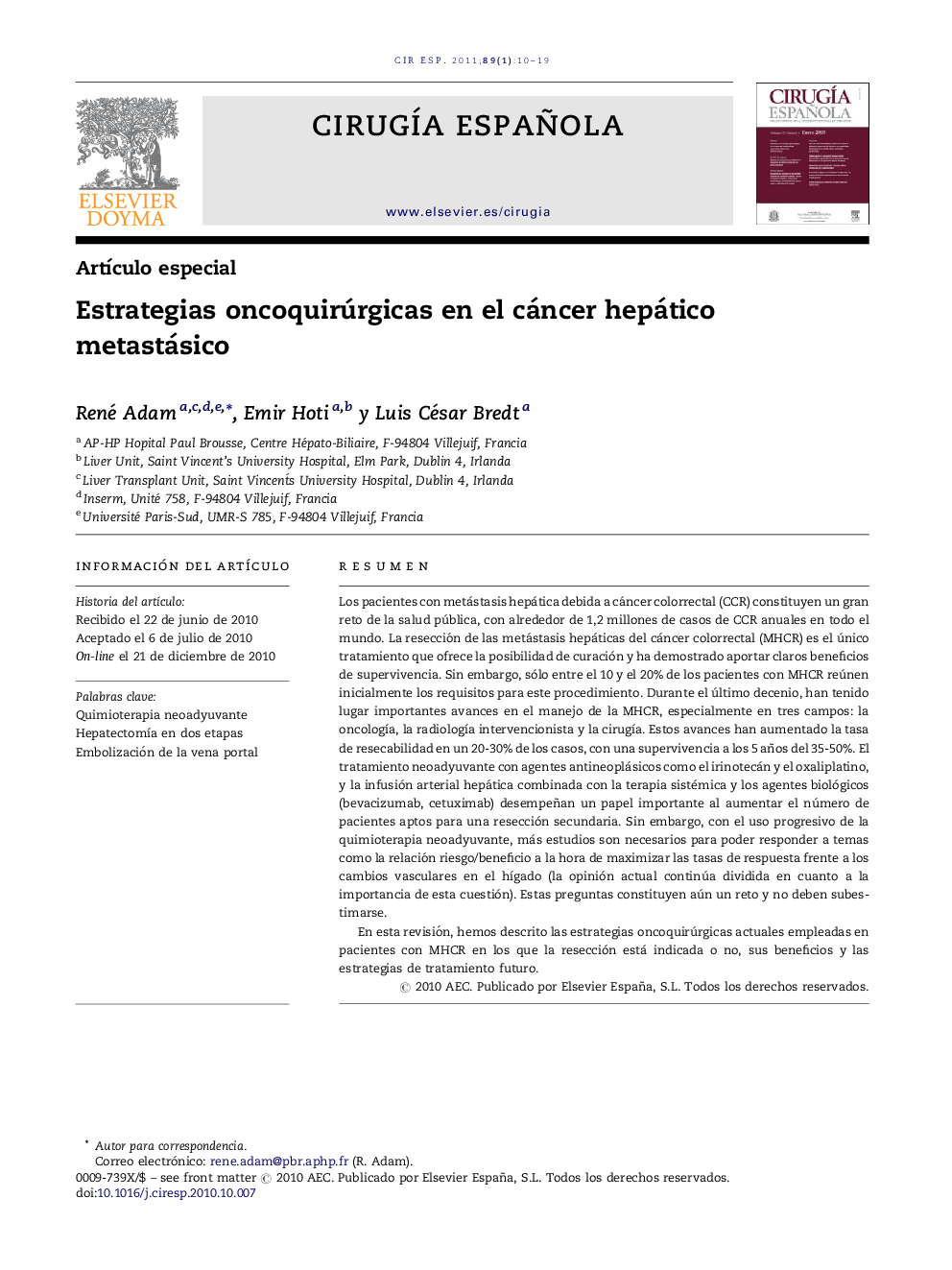| Article ID | Journal | Published Year | Pages | File Type |
|---|---|---|---|---|
| 4253325 | Cirugía Española | 2011 | 10 Pages |
ResumenLos pacientes con metástasis hepática debida a cáncer colorrectal (CCR) constituyen un gran reto de la salud pública, con alrededor de 1,2 millones de casos de CCR anuales en todo el mundo. La resección de las metástasis hepáticas del cáncer colorrectal (MHCR) es el único tratamiento que ofrece la posibilidad de curación y ha demostrado aportar claros beneficios de supervivencia. Sin embargo, sólo entre el 10 y el 20% de los pacientes con MHCR reúnen inicialmente los requisitos para este procedimiento. Durante el último decenio, han tenido lugar importantes avances en el manejo de la MHCR, especialmente en tres campos: la oncología, la radiología intervencionista y la cirugía. Estos avances han aumentado la tasa de resecabilidad en un 20-30% de los casos, con una supervivencia a los 5 años del 35-50%. El tratamiento neoadyuvante con agentes antineoplásicos como el irinotecán y el oxaliplatino, y la infusión arterial hepática combinada con la terapia sistémica y los agentes biológicos (bevacizumab, cetuximab) desempeñan un papel importante al aumentar el número de pacientes aptos para una resección secundaria. Sin embargo, con el uso progresivo de la quimioterapia neoadyuvante, más estudios son necesarios para poder responder a temas como la relación riesgo/beneficio a la hora de maximizar las tasas de respuesta frente a los cambios vasculares en el hígado (la opinión actual continúa dividida en cuanto a la importancia de esta cuestión). Estas preguntas constituyen aún un reto y no deben subestimarse.En esta revisión, hemos descrito las estrategias oncoquirúrgicas actuales empleadas en pacientes con MHCR en los que la resección está indicada o no, sus beneficios y las estrategias de tratamiento futuro.
Patients with liver metastases from colorectal cancer (CRC) present a major public health challenge with approximatelly, 1,2 million cases of CRC occur yearly worldwide. Resection of colorectal liver metastases (CRLM) is the only treatment offering the possibility of cure and has been shown to provide clear survival benefits. However, only 10 to 20% of patients with CRLM are eligible for this procedure upfront. During the last decade, major advances in the management of CRLM have taken place involving three fields: oncology, interventional radiology, and surgery. These advances have increased the resectability rate to 20-30% of cases with a 5-year survival of 35-50%. Neoadjuvant treatment with chemotherapeutic agents such as irinotecan and oxaliplatin, and hepatic artery infusion combined with systemic therapy and biologic agents (bevacizumab, cetuximab) play an important role in increasing the number of patients eligible to secondary resection. However, with the progressive use of neoadjuvant chemotherapy further studies are necessary to answer questions such as the risk: benefit ratio in maximizing response rates versus vascular changes in the liver (current opinion still divided concerning their importance). These questions remain challenging and should not be underestimated.In this review, we have described the current oncosurgical strategies employed in patients with resectable and non resectable CRLM, their benefits, and future treatment strategies.
